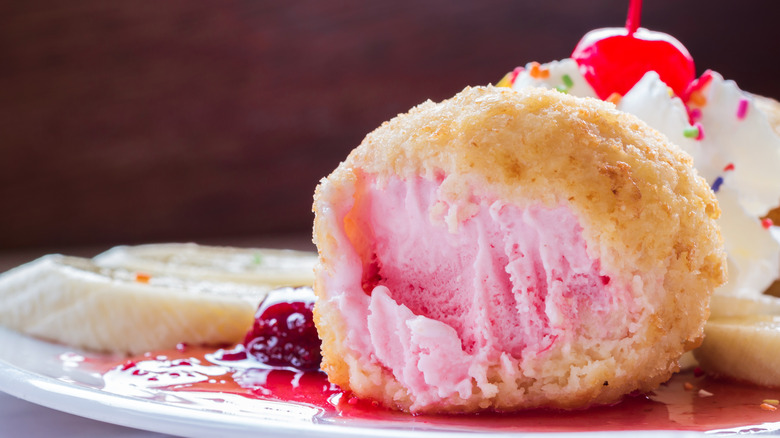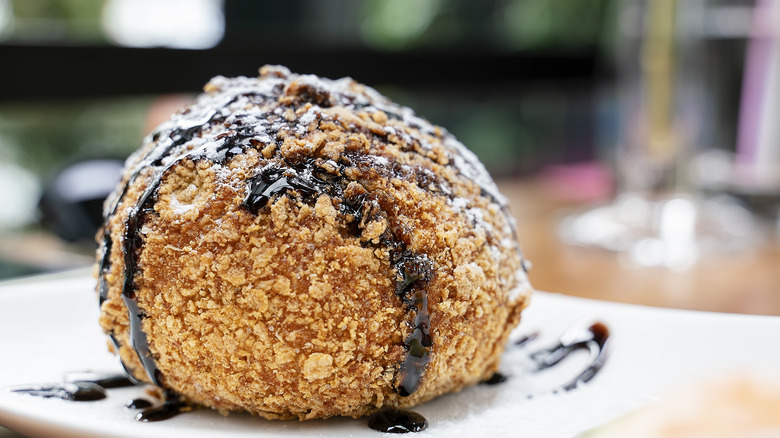The Reason Fried Ice Cream Doesn't Melt
At a glance, fried ice cream seems like a complete contradiction that really shouldn't be possible. Anyone who has struggled to scarf down an ice cream cone on a summer day knows that the frozen treat basically disintegrates in the heat. The idea that it would stay frozen when dunked in hot oil seems absurd. What ultimately makes this paradox possible comes down to one deceptively simple factor: the insulation of the batter.
The thin batter doesn't seem like it would be sufficient to keep out the scorching heat of frying oil. However, the tricky thing about food temperature is that heat moves very slowly beyond the immediate point of contact without the help of heat-conductive material or the radiation from a microwave. It's the same reason why it takes so long to roast thick cuts of meat all the way through, or why certain foods can be scalding on the outside while still frozen on the inside after being heated.
With the solid, cold insulation of the outside layer, it would take longer than you'd imagine for the high heat to make it past the batter and into the ice cream. Plus, with an average fry time of a few seconds, fried ice cream never stays in the oil long enough to melt more than just the very outer edge of the ice cream portion.
Reinforcing the batter insulation of fried ice cream
There are two layers of insulation to consider when it comes to making fried ice cream. The first is the egg white coating, and the second is a breadcrumb or cereal shell. If you're using the Japanese tempura method instead, the order is reversed: You should roll your ice cream in crumbs before dunking it in the tempura batter.
Ideally, the ice cream balls should be frozen for an extra hour before and after you coat them. This ensures that the ice cream is as cold as possible before heading into the oil, making it even more difficult for the heat to get past the batter and melt the ice cream. Additionally, freezing the ice cream balls until they are rock solid helps reinforce a stable and consistent layer of insulation surrounding the ice cream. After that, it's just a matter of dunking the ice cream sufficiently to fry the batter before pulling it out for a perfect hot and cold treat.

